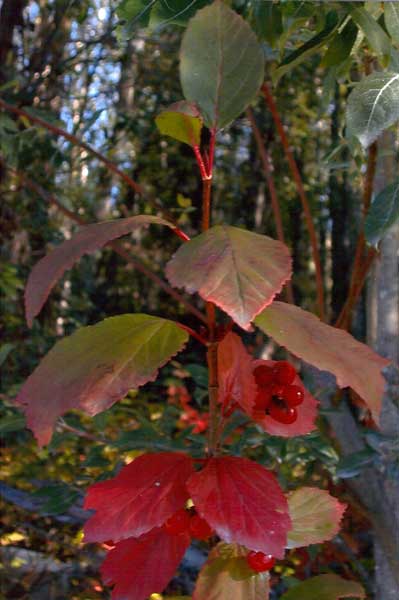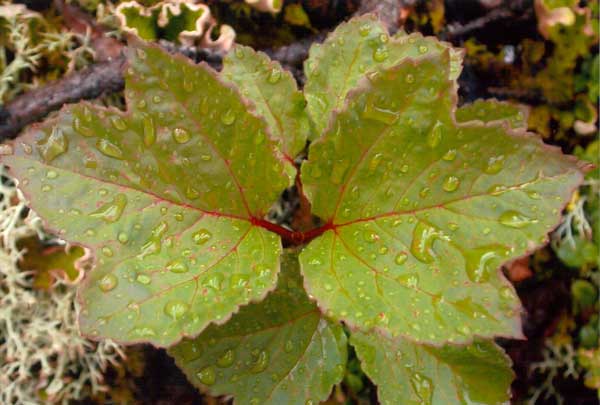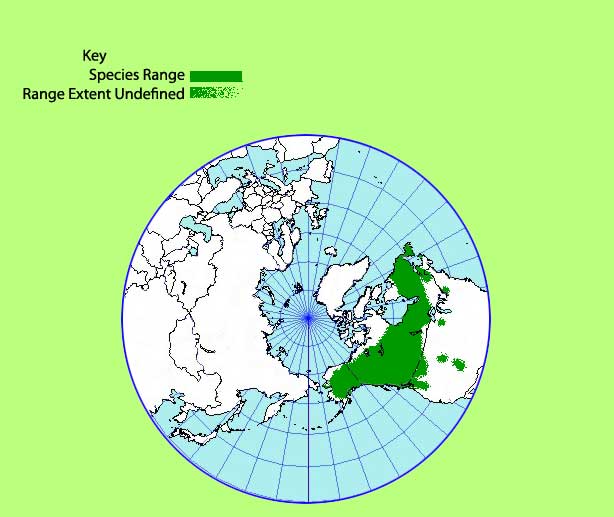Viburnum edule : Highbush-cranberry
Taxonomy | Description | Biology | Ecology | Uses | Images | Range Maps
Taxonomy |
Scientific Name:Kingdom: Plantae Division:
Class: Dicoteldonae (two seed-leaves) Family: Caprifoliaceae (Honeysuckle Family) Genera: Viburnum (Arrow-wood) (Classic Latin name for a species of this genus.) Species: edule (Lat. edible from edere= to eat; reffering to the edible berries) Synonym(s): V.opulus English Name(s):Highbush-cranberry, Squashberry, Pembina, Lowbush-cranberry First Nation Names:
|
Description |
Structure:
Leaves:
Reproductive Parts:
Seed:
Not to Be Confused With:
|
Biology |
Physiology:
Life Cycle:Seasonal Cycle:
|
Uses |
Modern:Industrial: Medicinal: Food: Traditional Gwich'in:Folklore: Industrial: Medicinal: Food: Traditional Other:Folklore: Industrial: Medicinal: Food: |
Images |
|
Top of bush in early autumn Leaves and berries in autumn 3-lobed leaves Unripe berries Illustration from: Illustrated Flora of BC |
Range Maps |
|
World Range: North American, from NL & LB to AK, north to treeline, south to PA, MN, CO, and OR.
In Yukon: Found north to Porcupine River. |






